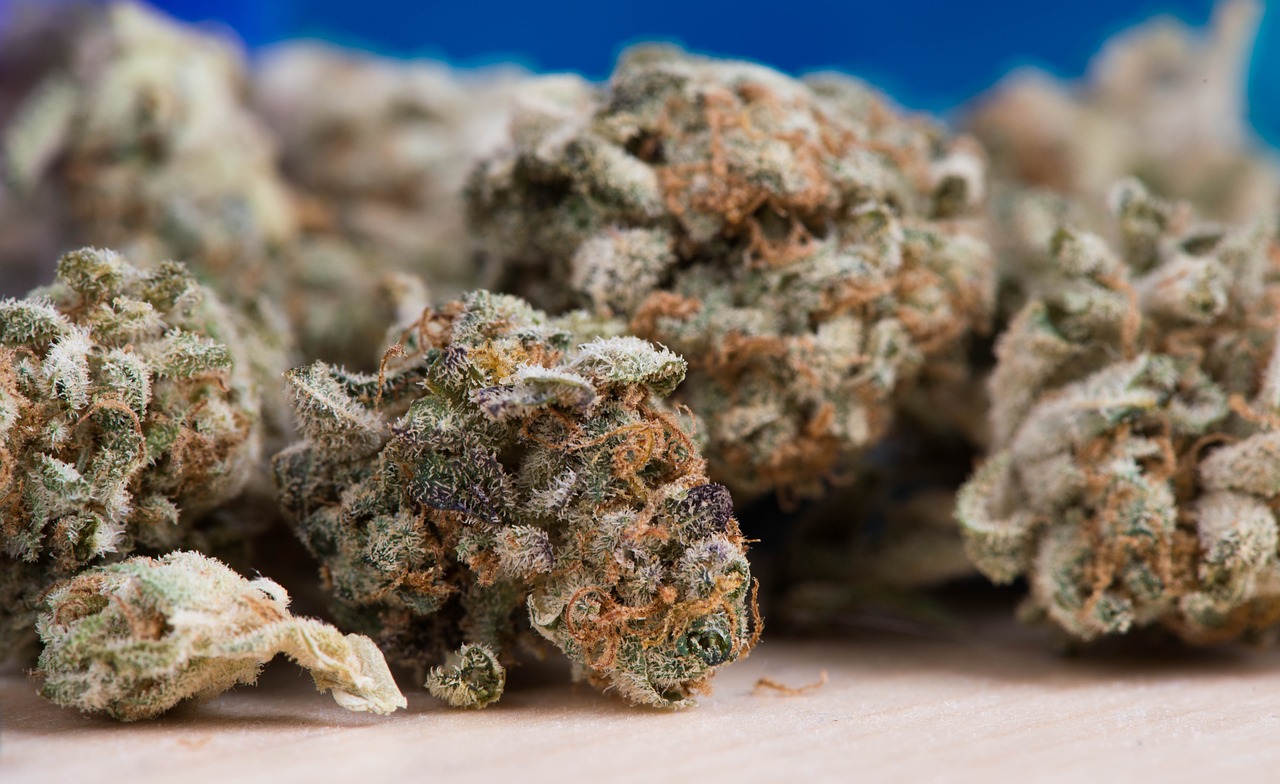Terpenes are organic compounds commonly found in plants, including cannabis. They are responsible for the aromatic and flavorful characteristics of various plants, fruits, and flowers. In cannabis, terpenes are the fragrant oils that contribute to its unique scent and taste.
But terpenes do more than just provide a pleasant aroma. They also interact synergistically with other compounds in cannabis, such as cannabinoids like THC and CBD. This interaction, known as the entourage effect, may potentially enhance the therapeutic effects of cannabis. Different terpenes are believed to have distinct effects, such as promoting relaxation, boosting mood, or providing pain relief.
Below is our compiled list of terpenes and their believed properties. This list should serve to help you find the right herbal medicine you need for your body. Terpenes are broken down into groups, piney, woody, fruity, and floral. Please note this list may be updated over time so check back for updates as research progresses.
Piny
Alpha-Pinene
- Aromatic Profile: Sharp, sweet, fresh and piny
- Botanical Sources: Pine and conifer trees, rosemary, orange peels
- Associated Cannabis Strains: Jack Herer, Dutch Treat, OG Kush, Blue Dream, ChemDawg, Trainwreck, Romulan, Island Sweet Skunk, Strawberry Cough, Bubba Kush
Beta-Pinene
- Aromatic Profile: Fresh, piny, earthy, spicy
- Botanical Sources: Cedar, pine, and conifer trees, dill, eucalyptus, oranges, parsley, rosemary, basil
- Associated Cannabis Strains: Jack Herer, Dutch Treat, Romulan, Blue Dream, Island Sweet Skunk, OG Kush, Bubba Kush, ChemDawg, God Bud, LA Confidential, Mango Haze, Strawberry Cough, Haze Berry, Royal Jack, Trainwreck
- Description: Anti-inflammatory Effects, Neurological Support, Antimicrobial Activity. Pinene has nootropic benefits by improving blood flow to the brain and blocking an enzyme known as acetylcholinesterase.
Camphene
- Description: any cannabis strains, even on our website, are described as pungent. In many cases, the reason for that pungency is the high rates of camphene in the chemical composition of strains. Camphene is a terpene with a pungent odor, which can often be found in small quantities in many widely used oils such as cypress oil, camphor oil, and citronella oil, among others. The predominant fragrance of camphene is spruce needles and moist soil. It is considered useful in bacterial and fungal infections.
Carene
- Aromatic Profile: Sweet, piny, woody, pungent
- Botanical Sources: Turpentine, rosemary, basil, pepper, cedar
Associated Cannabis Strains: Lemon Shining Silver Haze, Skunk XL, Arjan’s Ultra Haze #2, Super Silver Haze, Lemon Haze
Eucalyptol
- Description: Have you ever noticed how fresh and pungent the scent of eucalyptus is? That’s because the percentage of eucalyptol, the main terpene of this plant, can reach up to 90% in eucalyptus oil. It is also found in many plants, including basil, rosemary, sage, and of course, cannabis. It has a minty smell and is believed to have strong soothing properties.
Fruity
Limonene
- Aromatic Profile: Citrusy, bitter
- Botanical Sources: Citrus fruits, piny, rosemary, mint, fennel, juniper, cannabis
- Associated Cannabis Strains: Cookies and Cream, Dirty Girl, Lemon G, Liberty Haze, Emerald Jack, Shining Silver Haze
- Description: It’s pretty obvious from its name that limonene has an intense citrus aroma and sweet taste. This terpene not only boosts energy but also kills pathogens in the human body. Interestingly, the molecular structure of limonene helps it quickly penetrate cell barriers and enhance the action of THC. Limonene is found in large quantities in lemony strains such as Lemon Haze or those of the Diesel family.
Myrcene
- Aromatic Profile: Fruity, earthy, clove-like
- Botanical Sources: Sweet basil, hops, mangos
- Associated Cannabis Strains: OG Kush, Remedy, 9 Pound Hammer, Grape Ape, FPOG, AK-47, Granddaddy Purple, Blue Dream, Tangie, Harlequin
- Description: Myrcene is one of the most widespread marijuana terpenes, and it is equally common in both Sativa and Indica strains. If a strain smells earthy, musky, and incense-like, there’s probably a high percentage of myrcene in it. This terpene is loved by cannabis enthusiasts worldwide because when interacting with cannabinoids, myrcene acts as an amplifier for THC. In what way, you may ask? The thing is, myrcene affects the permeability of cell membranes; it allows more THC to reach brain cells, which increases their rate of absorption. Myrcene is actually why mangos are used to prolong and intensify the weed high, because this tropical fruit has astonishing quantities of myrcene in it, and high doses of myrcene have a relaxing, sedative, and almost narcotic effect.
Para-Cymene
- Aromatic Profile: Citrusy, sweet
- Botanical Sources: Cumin, thyme, angelica root, bay leaves, basil, carrot seed, cloves, clary sage, grapefruit, anise, oregano, eucalyptus, coriander, mace.
Ocimene
Description: Ocimene is one of the sweetest terpenes out there. It has an almost sugary aroma with herbal and woody notes. It is widely found within many plants and flowers and is one of the most common fruit terpenes that’s found in mangos, kumquats, mint, orchids, parsley, and basil. It’s believed that ocimene’s value lies in its antiviral, antifungal, antiseptic, decongestant, and antibiotic properties, putting it in the group of medical terpenes. One thing to consider if you want to benefit from ocimene in your weed is that it’s quite a delicate terpene and evaporates at only 100ºC. To save it, you therefore need to dry and cure your buds carefully.
Woody
Caryophyllene (aka beta-Caryophyllene) (fave)
- Aromatic Profile: Woody, spicy
- Botanical Sources: Black pepper, basil, copaiba, black caraway, oregano, lavender, allspice, fig, roman chamomile, cloves, hops, cinnamon, ylang-ylang, rosemary, cannabis
- Associated Cannabis Strains: Royal Cookies, OG Kush, White Widow, Death Star, Blueberry Cheesecake, Candyland, GSC, Cookies and Cream, GG4, Purple Punch
- Description: Caryophyllene is one of the most well-known and well-researched terpenes that’s present in weed. It has a sweet aroma of clove with notes of wood. Aside from cannabis, this terpene is also found in black pepper, clove, oregano, and green vegetables. In 2008, it was proven that caryophyllene binds to CB2 receptors in the human body. This discovery is extremely important because it makes caryophyllene the only known terpenoid that directly activates the human cannabinoid system. Caryophyllene has powerful therapeutic properties and is definitely one of the “medical terpenes”. It’s recommended for the treatment of inflammation, bodily pains, muscle tension, and symptoms of autoimmune disorders.
Caryophyllene is Unique
Caryophyllene is unique because it is the only terpene that binds directly to cannabinoid receptors. These receptors, called CB1 and CB2, are a part of the body’s endocannabinoid system (ECS). This system is responsible for modulating many of the body’s functions, such as immunity, digestion, temperature regulation, mood, and sleep cycles.
The CB1 receptors are located throughout the brain and central nervous system, and the CB2 receptors are largely found in the peripheral nervous system and organs. Cannabinoids tend to have an affinity to one receptor or the other. For example, THC binds to the CB1 receptors, causing the psychoactive and euphoric effects associated with marijuana.
Caryophyllene binds to CB2, which does not produce psychoactive effects or boost the effects of THC, as many other terpenes do. Because it behaves like a cannabinoid in relationship to the ECS, caryophyllene has immense potential to provide many therapeutic and medicinal benefits. The CB2 receptors are typically associated with reducing inflammation, easing pain, and battling insomnia.
Humulene
- Aromatic Profile: Earthy, woody, spicy
- Botanical Sources: Hops, cannabis, basil, clove, black pepper, sage, ginseng
- Associated Cannabis Strains: Death Star, Headband, Thin Mint GSC, Original Glue, Candyland, White Widow, Pink Kush, Bubba Kush, Super Lemon Haze, Sour Diesel, Skywalker OG
- Description: Humulene gives cannabis a pronounced smell of wood and earth which, when combined, reminds many people of hops. Actually, this plant is where humulene is found in its biggest quantities. Besides hops and cannabis, the terpene is also present in various spices such as coriander and cloves which, thanks to their humulene content, have often been used as a remedy for inflammation.
Terpinolene
- Aromatic Profile: Smoky, woody, herbal
- Botanical Sources: Lilac, tea tree, nutmeg, pine trees, apples, cannabis, cumin
- Associated Cannabis Strains: Dutch Treat, Sensi Star, J1, Super Jack, Lemon Sour Diesel, Afghani, Jean Guy, Super Lemon Haze, Arjan’s Haze #3, Sour Tangie, Snowcap, Shipwreck, Sour Tsunami
- Description: Terpinolene has an aroma of flowers and herbs, with an easy-to-distinguish pine tree note. Aside from cannabis, it’s found in nutmeg, tea tree, apples, lilac, and more. It’s believed to be an active antioxidant as well as an antibacterial and antifungal agent. It is also a good sedative. As for its entourage effect when consumed with marijuana, it helps to enhance the relaxation that occurs after its use.
Floral
Citronellol
- Aromatic Profile: Floral, rose, citrus
- Botanical Sources: Lemongrass, rose, geranium, chamomile, sandalwood, cannabis, catnip
- Associated Cannabis Strains: Amnesia Haze, Great White Shark, Island Sweet Skunk
Geraniol
- Aromatic Profile: Sweet, rose, slightly citrusy
- Botanical Sources: Rose, palmarosa, citronella, geranium, lemon
- Associated Cannabis Strains: Afghan, Skunk Headband, Island Sweet Skunk, Afghani, Lavender, Amnesia Haze
Linalool
- Aromatic Profile: Floral, spicy
- Botanical Sources: Lavender, laurel, cinnamon, rosewood, mint, birch trees, citrus fruits
- Associated Cannabis Strains: Amnesia Haze, Special Kush, Lavender, LA Confidential, OG Shark
- Description: Linalool is a terpene that gives marijuana its delicate floral scent and is also found in lavender. Herbalists have traditionally used it to treat anxiety, depression, insomnia, pain, and inflammation. You know how many people keep bouquets of lavender in their bedrooms, and some even put it under their pillow? That’s because the linalool in lavender helps them calm down and fall asleep. The same goes for linalool-heavy cannabis strains that are known for their relaxing and stress-relieving properties.
Sources:
- https://labeffects.com/sensing-terpenes-a-guide-to-terpene-aromas-and-flavors/
- https://herbiesheadshop.com/blog/terpenes-101-your-guide-to-cannabis-flavors
- https://finestlabs.com/pinene-terpene/
- https://thebloombrands.com/2022/10/24/caryophyllene-terpene-guide/




